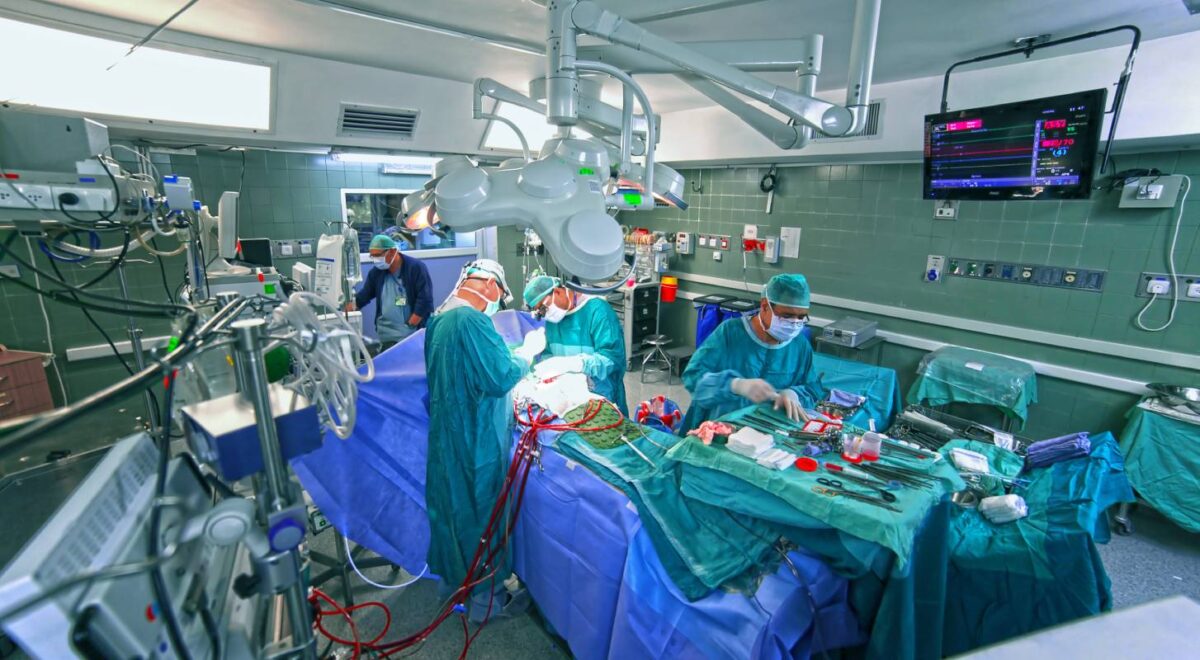Fast-Track Anesthesia in Cardiac Surgery

Fast-track surgery and anesthesia is designed to get patients who have undergone elective procedures back home as soon as possible, heralded by the age of minimally invasive surgery and ambulatory procedures [2]. This requires anesthesiologists to be comfortable designing a regimen that allows the patient to have a short and safe recovery from anesthesia, and one area where fast-track anesthesia is being tried is cardiac surgery [2].
Traditionally, opioid-based general anesthesia has been preferred to attenuate stress response in patients undergoing cardiac surgery, however, this technique can lead to prolonged mechanical ventilation weaning times and worse outcomes [1]. Thus, some surgical teams have begun utilizing a central neuraxial block, such as spinal anesthesia or thoracic epidural anesthesia, to provide adequate pain and stress control while also having faster emergence times [1]. One retrospective review looked at all adult cardiac surgery cases at the University of Iowa Hospital since 2008, when general anesthesia with high spinal anesthesia (HSA) was first implemented [1]. This study showed that patients who underwent GA with high spinal anesthesia had faster extubation times, without having an increased incidence of complications such as epidural hematoma and intractable hypotension, compared to patients who underwent GA alone [1]. The use of thoracic epidural anesthesia during cardiac surgery has been associated with good pain and stress control, improved hemodynamic stability and shorter postoperative recovery [1]. However, when compared to single shot spinal anesthesia, thoracic epidural is associated with an increased risk of epidural hematoma and requires a catheter which is complicated in patients on anticoagulation therapy [1]. Single shot spinal anesthesia is technically simpler, does not require catheterization, and is performed at a lower level on the spinal cord, decreasing chances of disastrous sequelae [1]. And while there was originally concern for increased hemodynamic instability in patients with underlying cardiac conditions undergoing HSA, that concern has not been supported by evidence [1].
Fast-track anesthesia also has benefits in the pediatric population [3]. A group of 194 children with congenital heart disease were selected for a study in BMC Pediatrics that compared outcomes between ultra fast-track anesthesia and conventional anesthesia [3]. While neither group had significant complications occur, patients who underwent ultra fast-track anesthesia had significantly shorter hospital stays and extubation times [3]. These patients also performed better hemodynamically, and a reduction in mechanical ventilation times, as seen in the ultra fast-track anesthesia group, reduces the likelihood of serious respiratory complications down the road [3]. Interestingly, fast-track anesthesia use in adult cardiac patients did not result in statistically significantly shorter ICU stays, but it did in pediatric patients [1] [3]. The adult study researchers postulate that this is likely due to underlying comorbidities in adults that are not directly related to the surgery [1]. This conclusion is further strengthened by the fact that children often do not have such comorbidities, and thus were able to have shorter ICU stays [3].
Fast-track anesthesia was first developed in the 1990s, and since then it has proven to be a valuable tool in surgical practice [2]. During cardiac surgery, the approach can reduce extubation time, post-operative recovery time, and hospital stays, all the while without compromising hemodynamic stability or pain control [1]. It is also being used in other types of procedures, such as total joint replacements and arthroplasties.
References
- Hanada S, Kurosawa A, Randall B, Van Der Horst T, and Ueda K. Impact of high spinal anesthesia on fast-track strategy in cardiac surgery: retrospective study. Regional Anesthesia & Pain Medicine, 2020; 45(1): 22-26. PMID: 31772035. doi: 10.1136/rapm-2018-100213
- White PF, Kehlet H, Neal J, Schricker T, Carr DB, Carli F. The Role of the Anesthesiologist in Fast Track Surgery: From Multimodal Analgesia to Perioperative Medical Care. Anesthesia and Analgesia, 2007; 104(6): 1380-1396. doi: 10.1213/01.ane.0000263034.96885.e1
- Xu, J, Zhou G, Li Y and Li N. Benefits of ultra-fast-track anesthesia for children with congenital heart disease undergoing cardiac surgery. BMC Pediatrics, 2019, 487. doi: 10.1186/s12887-019-1832-9
